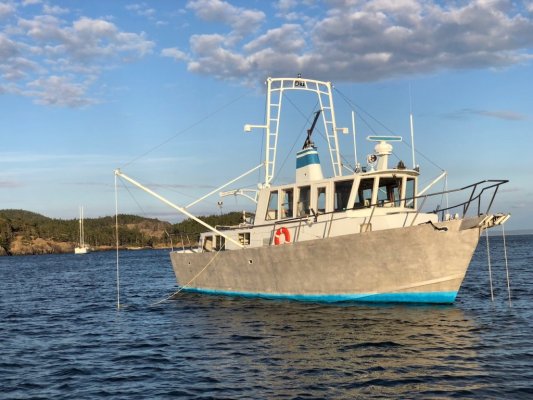paravanes
Paravanes do put a significant load on the boat, the mast and the poles are in compression when the boat rolls either way. The resistance pressure of the fish greatly increases when the boat rolls away from the fish and it tries to dive. It always amazed me at the dampening effect when we were at cruise speed in big seas.. especially as Volunteer was a 60,000 boat. The P.O had rigged her with s.s. cables with a 4' triple braid shock line from the poles to the fish. It seems most use chain as it is easier to deal with and the chain doesn't saw into logs the fish pick up (this happened to me and it was a P.I.T.A. to cut the log loose ). The poles on Volunteer were galv. steel, 2.5" dia. and about 3/16" wall. I wouldn't be shocked to find the fish exerted 750-1000 lbs of force at 7+ kts as the strain on the rig felt significant. In the attached pic you can see the fish on the roof of the aft cabin , the poles and their attachment points, and the mast and associated rigging. I never felt they were a safety hazard.. but keeping enough depth at the fish is critical. If you are in big seas and a fish comes out of the water it gets ugly really fast
HOLLYWOOD




